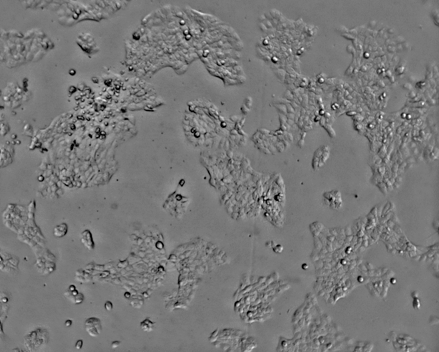Keywords:
By Dr. Christian Oberdanner.
Cell-based assays are a core research tool, offering an informative and cost-effective counterpart to in vitro and animal tests. Where destructive methods involving cell lysis once predominated, live cell assays are now commonplace, with measurements collected in real time, either at a single time point (end-point assays) or repeatedly over the course of minutes, hours or even days (kinetic assays).

These cells have stories to tell. Just watch and listen.
The rise of real-time live-cell assays
Compare a movie to a still image, and you can appreciate how valuable kinetic cell assays can be, in contrast to the more conventional end-point formats, which capture only a snapshot of the cell’s complex story. Knowing precisely when something occurred and how long it lasted can add a vital dimension to your understanding of dynamic cell behaviors and responses. Whether you choose end-point or kinetic formats, live cell assays offer more physiologically relevant and contextual information than their in vitro predecessors, at a fraction of the cost of testing in animals.
More information for your money
Fortunately, running live cell assays needn’t blow your budget. Advances in fluorescent reagents, detection equipment, automation and software have made it possible to run a wide selection of information-rich, real-time cell assays on affordable microplate readers. Monitoring even relatively basic aspects of cell health such as proliferation, cell viability and apoptosis can provide significant biological insights. Cell health indicators are often monitored simultaneously with specific biological markers to add even more information to the mix. More recently, multimodal microplate readers have begun to include cell imaging, which further expands the range of capabilities to include more complex applications like wound healing and cell migration.
Environment matters
Cell-based assays that don’t faithfully reflect physiological conditions are a waste of time. A fundamental element of successful live-cell assays is therefore the ability to maintain cell health throughout the experiment. Since cells can’t talk, the importance of adequate environmental control is easy to overlook, but we do so at our peril. Without it, we may miss – or misinterpret – what our cells are really trying to say.
Here are just a few things your cells would tell you, if only they could talk:
- "I can't breathe" - Your cells depend on accurate and tightly controlled O2, CO2 and humidity levels to maintain metabolic and respiratory function over time. Common bicarbonate-buffered culture media require 5-10% CO2 to maintain pH between 7.2 and 7.4. It can also be advantageous to actively regulate oxygen levels to mimic physiological conditions of different cell types or tissues. High humidity is essential to prevent evaporation, which can alter media salt and nutrient concentrations.
- “It’s too hot (or too cold)” – Strict temperature control is critical for cell health and homeostasis. Even a few degrees of deviation from physiological temperatures can induce heat- or cold-shock responses that have negative consequences for your cells. Active cooling may be just as important as heating for robust temperature control, particularly when the desired set point is close to ambient.
- “I need some stability” – Random fluctuations in temperature, gas concentrations and humidity during the course of your assay can trigger cellular stress responses, changes in proliferation rates, and other unexpected behaviors - all without your even being aware of it.
- “The grass is greener next door” – Reliable and robust assay results depend on consistent environmental conditions from well to well, across the entire microplate. Variations in humidity can lead to uneven evaporation across the plate, a common source of confounding edge effects. Uneven temperature or gas concentrations across the plate can be equally disastrous for cell growth and function, leading to unacceptably large CVs across replicates.
- “Please protect me” – Contamination is a risk in any live cell-based assay, particularly during experimental manipulations. Minimizing human intervention – for example, with automated lid lifting and reagent dispensing – can go a long way to ensuring there are no mishaps.
- “Look at me now!” – Your cells are about to do something phenomenal, maybe even something that you couldn’t have predicted. They need your attention now, but you’re asleep. To respond at the right time or capture the unexpected, careful experimental design is required to establish appropriate read intervals, timing of stimuli and reagent additions. Automation, remote control and conditional responsiveness can help ensure you don’t miss the window of opportunity.
Your cells have a lot more to say about how to get the most from them in live cell assays. To learn more download our free application guide.
About the author

Christian Oberdanner
Dr. Christian Oberdanner is Product Manager at Tecan Austria. He studied molecular biology at the University of Salzburg with a strong focus on cell- and tumor biology during his PhD study. Christian started to work for Tecan Austria as external scientific consultant in 2005 and permanently joined the company in 2006. Since then he held the role of an Application Specialist in the research and development department as well as in the sales and marketing department and since 2015 of a Product Manager. Christian’s priority within Tecan is the multimode microplate reader portfolio.











